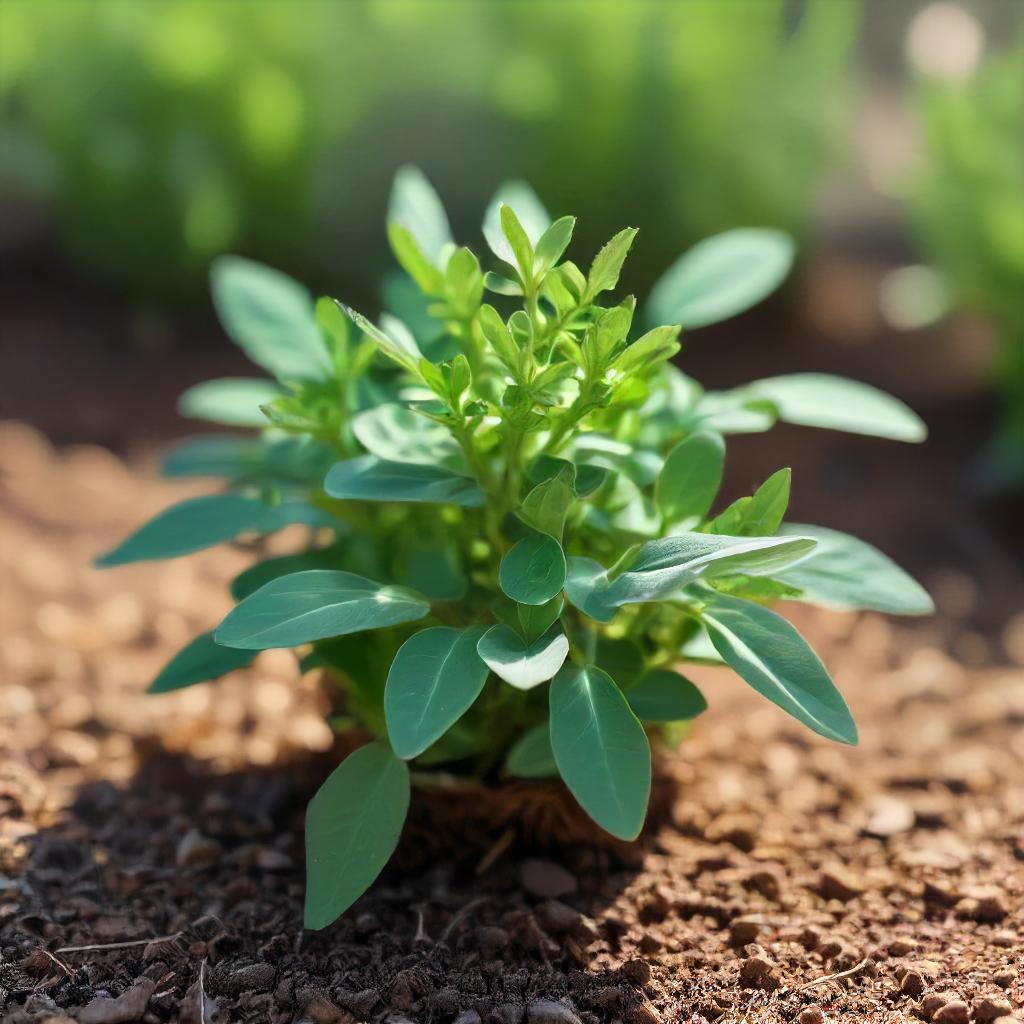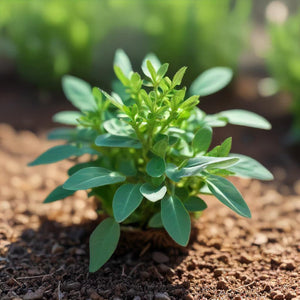- Hardiness Zone: 3-12 Annual
- Hardiness Zone: 9-11 Perennial
Seed Depth: 1/4–1/2 inch
Seed Spacing: 2–4 inches
Row Spacing: 12–18 inches
Sunlight: Full sun
Days to Sprout: 7–10 days
Days to Maturity: 30–40 days (greens), 90–110 days (seeds)
Growth Habit: Upright, bushy annual
Sunlight: Prefers full sun, requiring at least 6–8 hours of direct sunlight daily.
Soil Type: Thrives in well-drained, moderately fertile soil with a pH of 6.0–7.0. Adding compost improves fertility.
When to Plant: Sow seeds directly outdoors in early spring as soon as the soil can be worked, or in late summer for a fall harvest.
Direct Sowing: Plant seeds 1/4–1/2 inch deep, spacing them 2–4 inches apart. Thin seedlings to maintain proper spacing.
Indoor Sowing: Not typically recommended; fenugreek grows best when directly sown.
Succession Planting: Sow every 2–3 weeks for continuous harvests of fresh greens.
Watering: Water consistently but avoid overwatering; fenugreek prefers slightly dry conditions once established.
Fertilizing: Apply a light layer of compost at planting. Fenugreek fixes nitrogen in the soil, reducing the need for heavy fertilization.
Pruning: Harvest greens regularly to encourage new growth and prevent flowering if grown for leaves.
Pest and Disease Control: Generally pest-resistant, but watch for aphids and fungal diseases. Ensure proper spacing and airflow to reduce risks.
When to Harvest: For greens, harvest young leaves when plants are 4–6 inches tall, typically 30–40 days after planting. For seeds, allow plants to mature fully, around 90–110 days.
How to Harvest: Snip greens with scissors or a knife. For seeds, cut stems when pods are dry and brown, then thresh to collect seeds.
Seed Collection: Dry harvested pods thoroughly before extracting seeds.
Storing Seeds: Store seeds in an airtight container in a cool, dry place.
Why You’ll Love It
Fenugreek is a multipurpose heirloom herb prized for both its leafy greens and aromatic seeds. Often used in Indian, Middle Eastern, and Mediterranean cuisine, fenugreek adds a slightly sweet, nutty flavor to curries, spice blends, and teas. The leaves, known as “methi,” are tender and fragrant when harvested young. Easy to grow in containers or garden beds, fenugreek thrives in warm weather and matures quickly — making it a rewarding choice for both culinary and medicinal herb gardens.
Plant Characteristics
Height: 12–24 inches
Growth Habit: Upright and bushy with soft, clover-like leaves
Leaf Type: Trifoliate green leaves with a mild herbal aroma
Days to Maturity: 30–40 days for leaves; 90–100 days for seed harvest
Hardiness: Warm-season annual
Flavor and Culinary Uses
Flavor: Slightly bitter and nutty with a sweet maple-like scent when cooked
Culinary Uses: Young leaves can be sautéed, added to flatbreads, or used like spinach. Seeds are used whole or ground in curries, spice blends (like garam masala), and herbal teas.
Companion Planting Tips
Good Companions: Cucumbers, beans, potatoes, and brassicas
Avoid Planting Near: Other legumes, which may compete for the same nutrients
Bonus Benefit: Fixes nitrogen in the soil and attracts pollinators when in bloom
Common Issues and Solutions
Weak Growth: Plant in full sun with well-drained soil — avoid overly rich soil that may delay seed development
Low Germination: Soak seeds overnight before planting to improve sprouting
Overcrowding: Thin seedlings to improve airflow and prevent mildew or fungal issues
Seeds Per Packet
| 3g | Approximately 225 |
| 5g | Approximately 375 |
| 7g | Approximately 525 |
| 10g | Approximately 750 |
Why You’ll Love It
Fenugreek is a multipurpose heirloom herb prized for both its leafy greens and aromatic seeds. Often used in Indian, Middle Eastern, and Mediterranean cuisine, fenugreek adds a slightly sweet, nutty flavor to curries, spice blends, and teas. The leaves, known as “methi,” are tender and fragrant when harvested young. Easy to grow in containers or garden beds, fenugreek thrives in warm weather and matures quickly — making it a rewarding choice for both culinary and medicinal herb gardens.
Plant Characteristics
Height: 12–24 inches
Growth Habit: Upright and bushy with soft, clover-like leaves
Leaf Type: Trifoliate green leaves with a mild herbal aroma
Days to Maturity: 30–40 days for leaves; 90–100 days for seed harvest
Hardiness: Warm-season annual
Flavor and Culinary Uses
Flavor: Slightly bitter and nutty with a sweet maple-like scent when cooked
Culinary Uses: Young leaves can be sautéed, added to flatbreads, or used like spinach. Seeds are used whole or ground in curries, spice blends (like garam masala), and herbal teas.
Companion Planting Tips
Good Companions: Cucumbers, beans, potatoes, and brassicas
Avoid Planting Near: Other legumes, which may compete for the same nutrients
Bonus Benefit: Fixes nitrogen in the soil and attracts pollinators when in bloom
Common Issues and Solutions
Weak Growth: Plant in full sun with well-drained soil — avoid overly rich soil that may delay seed development
Low Germination: Soak seeds overnight before planting to improve sprouting
Overcrowding: Thin seedlings to improve airflow and prevent mildew or fungal issues
Seeds Per Packet
| 3g | Approximately 225 |
| 5g | Approximately 375 |
| 7g | Approximately 525 |
| 10g | Approximately 750 |






Share and get 15% off!
Simply share this product on one of the following social networks and you will unlock 15% off!